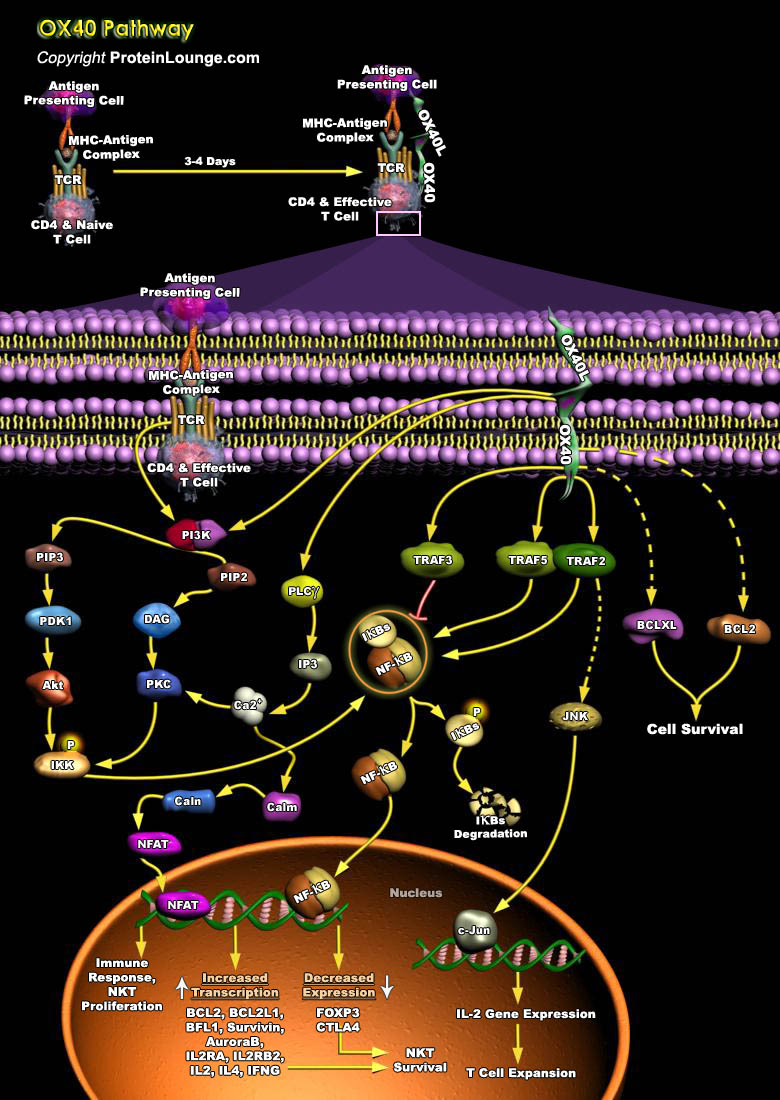
OX40 is an approximately 50-kD transmembrane glycoprotein of 249 amino acids, with a 49 amino acid cytoplasmic tail and a 186 amino acid extracellular region. It is a member of the TNFR (tumor necrosis factor receptor) superfamily and has three complete and one truncated cysteine-rich domains. It is a T-Cell activator that is believed to promote the survival (and perhaps prolong the immune response) of CD4+ T cells at sites of inflammation (Ref.1). OX40’s ligand (OX40L, also known as gp34, CD252, TNFSF4), a member of the TNF (Tumor Necrosis Factor) super family, is a 32 kDa protein, which has about 183 aa residue glycosylated polypeptide that consists of a 23 amino acid cytoplasmic tail and a 133 amino acid extracellular domain. It is a type II glycoprotein that[..]
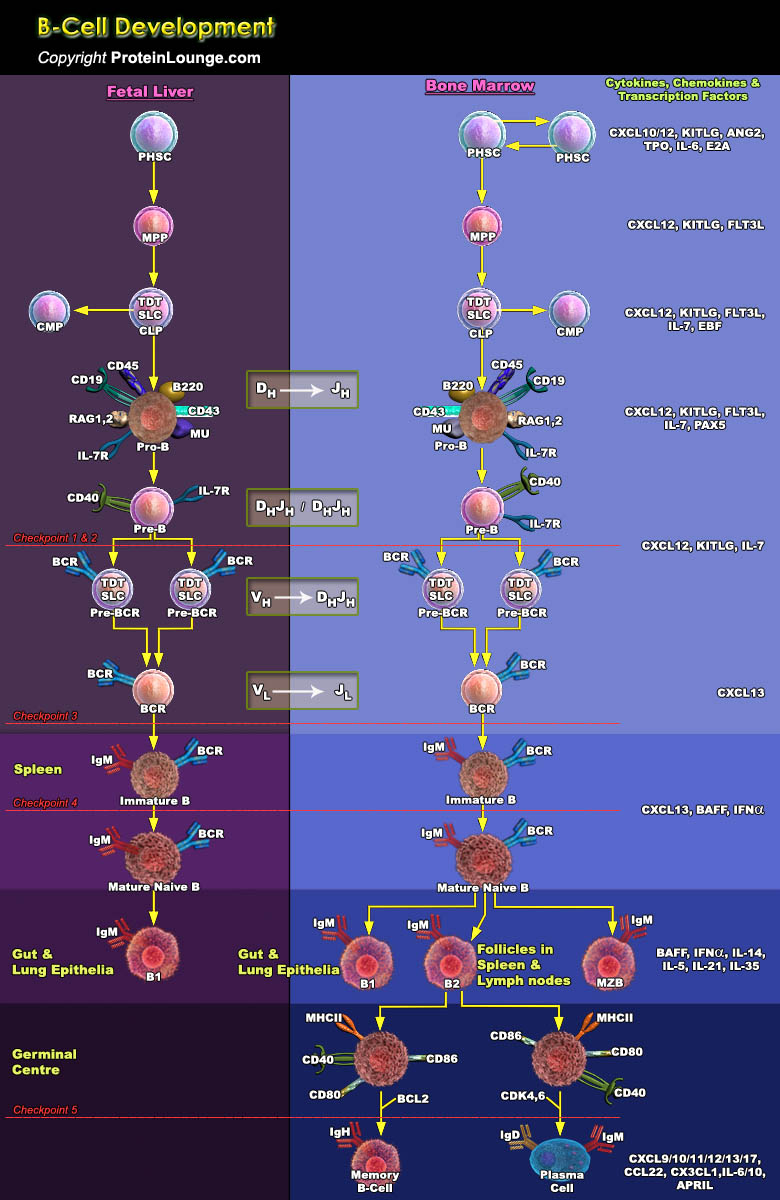
B lymphoid cells are essential for the humoral immune response by producing a diverse range of antigen-specific antibodies. Antibody-mediated immunity is provided by two distinctive B cell lineages that diverge early in life. The better-known conventional, or B2, B cells provide adaptive immunity by producing high-affinity pathogen-specific antibodies, typically in a T cell-dependent manner. The pool of B2 cells is constantly replenished from hematopoietic stem and progenitor cells in the bone marrow [Ref.1]. B1a cells provide innate-like immunity by producing “natural” low-affinity, broad-specificity antibodies against a wide range of overlapping antigens, including self-antigens. In contrast to B2 cells, the pool of B1a cells is largely established at[..]
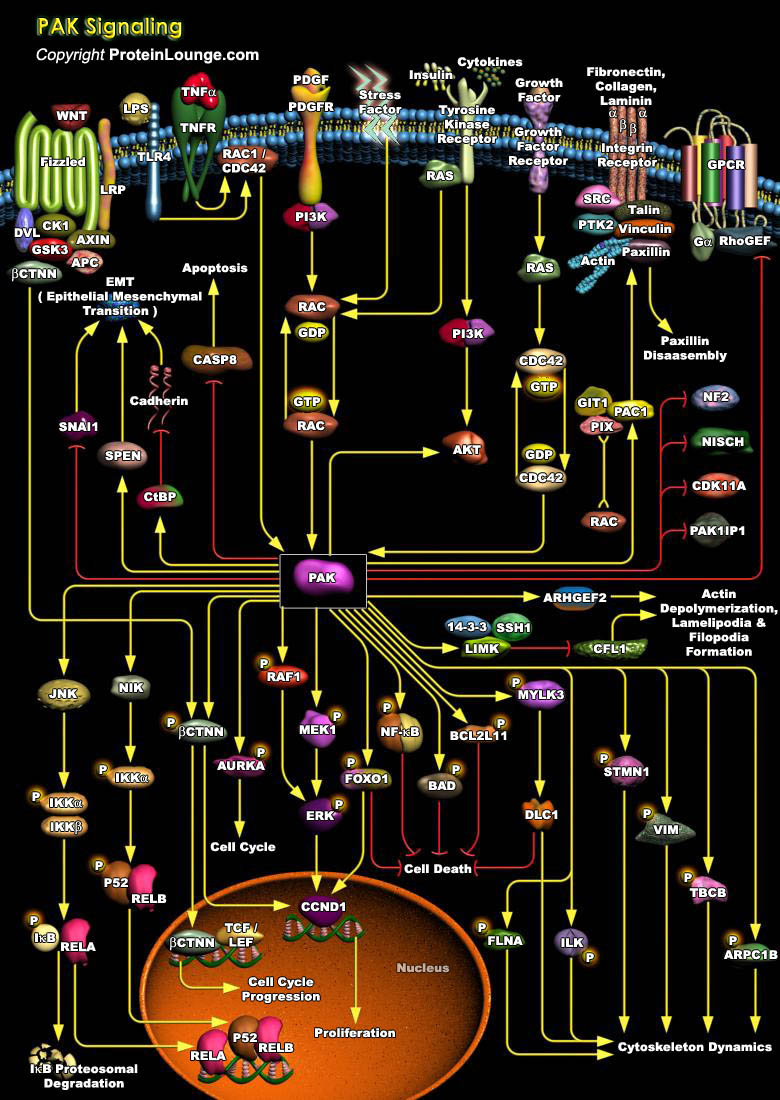
p21-activated kinase (PAK) family of serine/threonine protein kinases are downstream effectors of the Rho family of GTPases (Rac and Cdc42). PAKs are found in most eukaryotes and play an evolutionarily conserved role in many cellular processes like cell proliferation, survival, gene transcription, transformation, and cytoskeletal remodeling (Ref.1). There are six PAK isoforms identified in humans that share a conserved catalytic domain located at the C-terminus. They have been classified into two groups (I and II) according to the similarity of their catalytic domains, and regulatory mechanisms. The C-terminal kinase catalytic domain is similar among all human PAKs where as the N-terminal regions are more variable. Group I PAKs consists of (isoforms 1, 2 and 3) where[..]
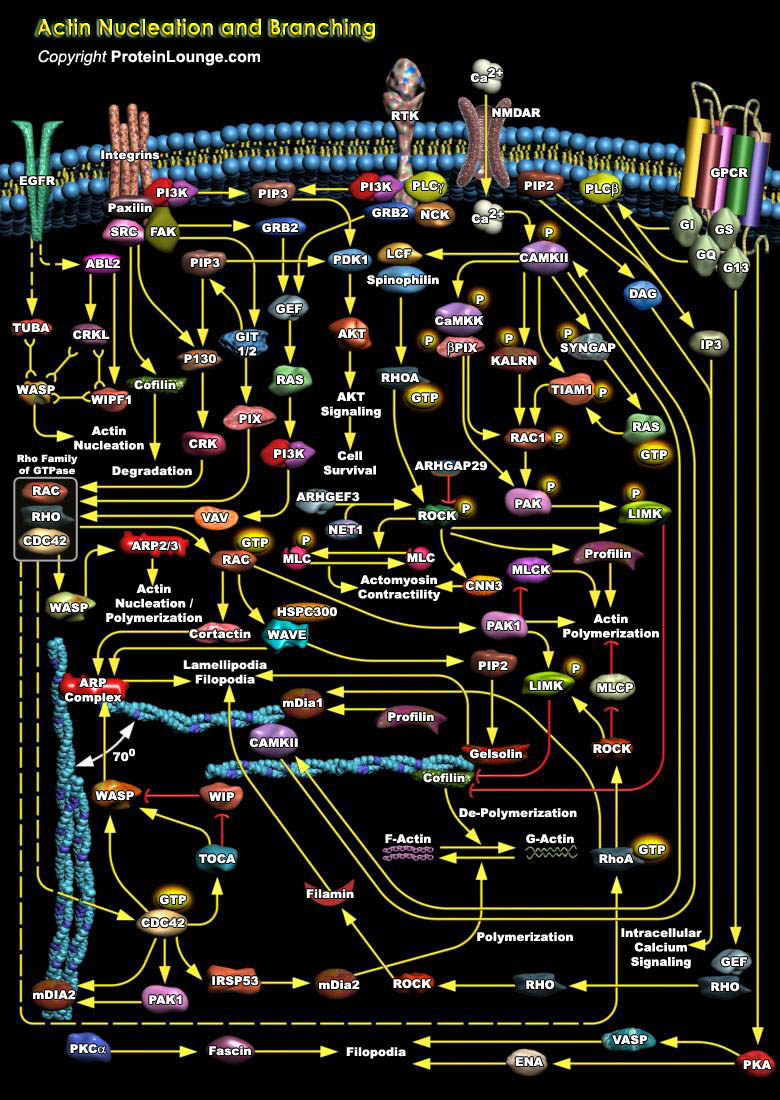
The actin family is a diverse and evolutionarily ancient group of proteins that provide the supportive framework to the three-dimensional structure of eukaryotic cells. It provides the forces that enable the cell to adopt a variety of shapes and to undertake directed movements. Certain cell types, such as polymorphonuclear leukocytes, monocyte/macrophages, and metastatic cells, are able to move rapidly through tissues and these movements are mediated by the actin cytoskeleton (Ref.1). An important property of actin is its ability to produce movement in the absence of motor proteins. At the cell membrane actin microfilament assembly protrudes the membrane forward producing the ruffling membranes in actively moving cells. These microfilaments also play a passive[..]

Ras is a membrane-associated guanine nucleotide-binding protein that is normally activated in response to the binding of extracellular signals, such as growth factors, RTKs (Receptor Tyrosine Kinases), TCR (T-Cell Receptors) and PMA (Phorbol-12 Myristate-13 Acetate). Ras signaling affects many cellular functions, which includes cell proliferation, apoptosis, migration, fate specification, and differentiation. Ras acts as a binary signal switch cycling between ON and OFF states, which are characterized in terms of a small molecule, a guanine nucleotide, bound to the protein. In the resting cell, Ras is tightly bound to GDP (Guanosine Diphosphate), which is exchanged for GTP (Guanosine Triphosphate) upon binding of extracellular stimuli to cell membrane receptors. In the[..]
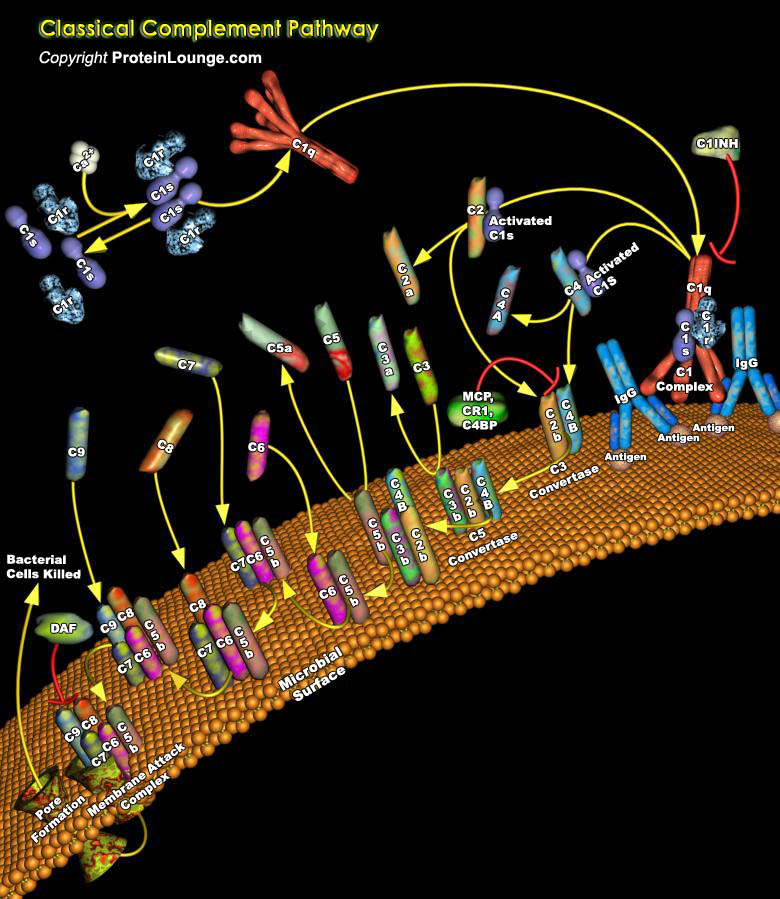
Complement is a system of circulating enzymes that is part of the body's response to illness or injury. The complement system plays an essential role in host defence against infectious agents and in the inflammatory process. It consists of about thirty plasma proteins that function either as enzymes or as binding proteins. In addition to these plasma proteins, the complement system includes multiple distinct cell-surface receptors that exhibit specificity for the physiological fragments of complement proteins and that occur on inflammatory cells and cells of the immune system. There are also several regulatory membrane proteins that function to prevent autologous complement activation and protect host cells from accidental complement attack. The complement system can[..]
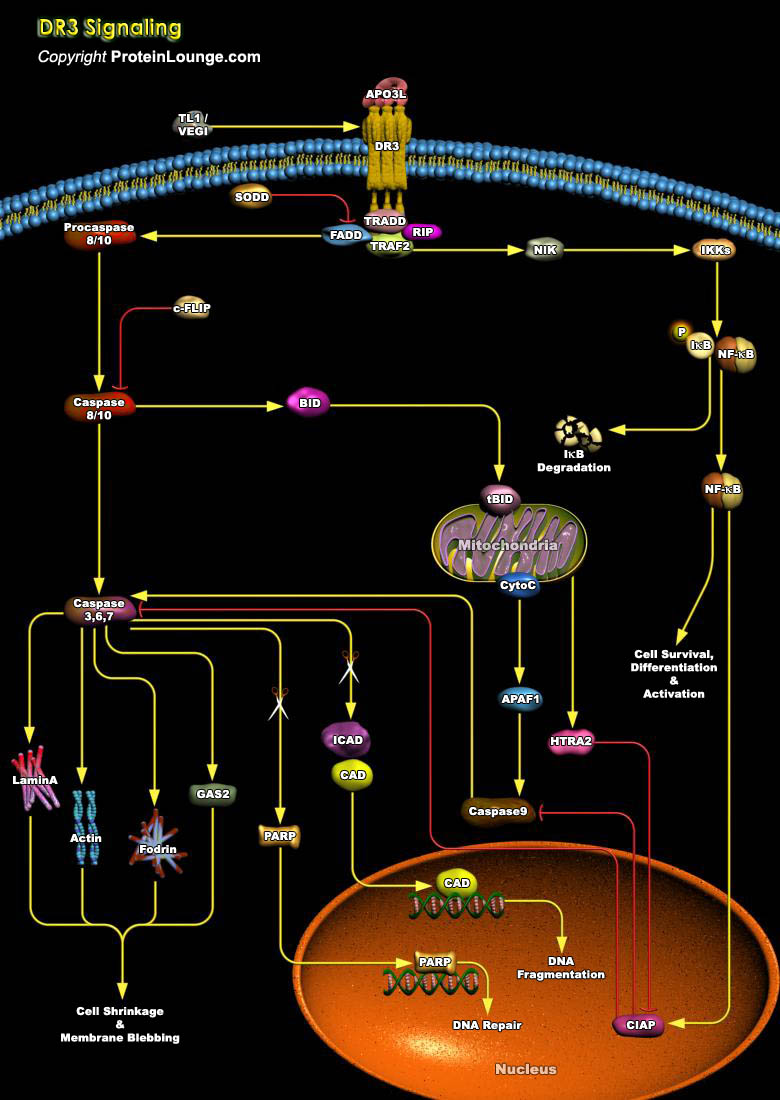
The TNFR (Tumor Necrosis Factor Receptor) superfamily comprises a growing family of type I membrane bound glycoproteins, which interact with the TNF family of soluble mediators and type II transmembrane proteins. At least 23 TNFR superfamily members and 17 known ligands have been identified in mammals. These receptors trigger pleiotropic responses, ranging from apoptosis and differentiation to proliferation, and have been implicated in immune regulation, host defense and lymphoid organ development. Members of the TNFR family are characterized by the presence of varying numbers (two to six) of cysteine-rich repeats in their cytoplasmic domains. Among these molecules, a novel subgroup has been defined, termed DR (Death Receptors), as one of their most prominent functions[..]
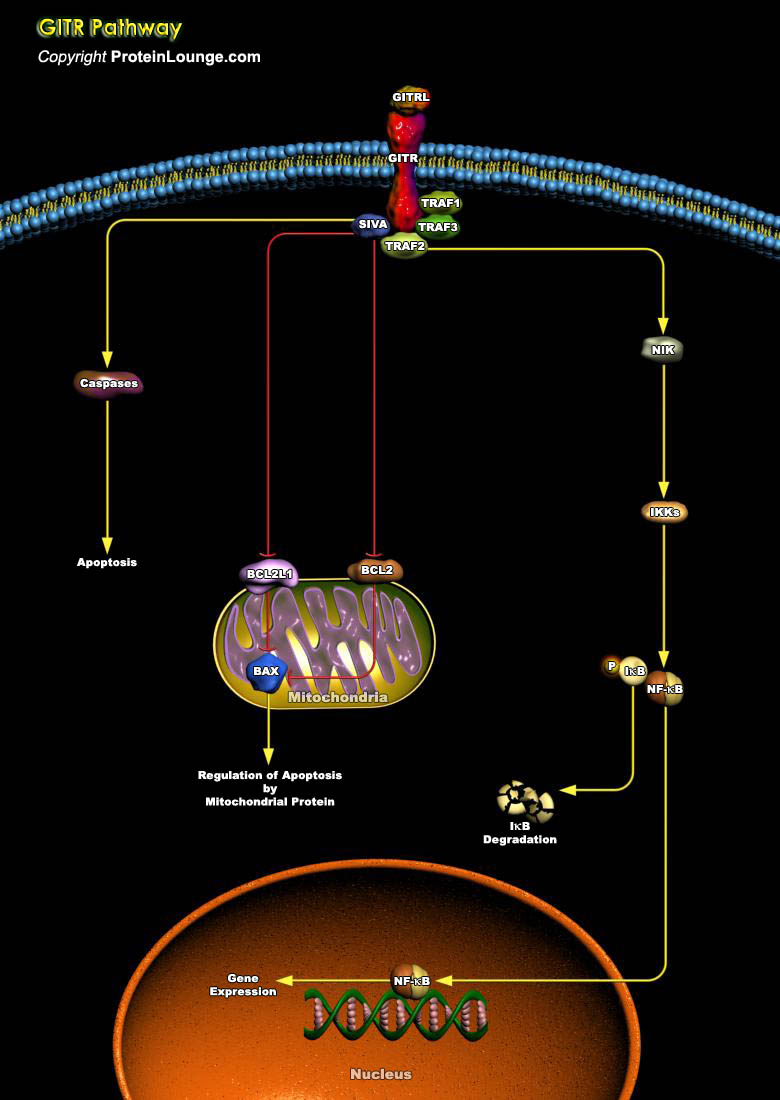
GITR (Glucocorticoid-Induced TNFR Family-Related) also termed AITR (Activation-Inducible TNFR Family Receptor) is a member of the TNFRSF18 (TNF Receptor Superfamily 18). It is a 228-amino acids type I transmembrane protein that is suggested to be a close relative of 4-1BB and CD27. Inducible during T-Cell activation, the molecule has a 19 amino acid residue signal sequence, a 134 amino acid residue extracellular region, a 23 amino acid residue transmembrane segment and a 52 amino acid residue cytoplasmic domain. It has three cysteine-rich motifs in its extracellular region. Its ligand is GITRL (AITRL). GITR expression is upregulated on T-Cells. A high level of GITR is constitutively expressed on CD4+ CD25+ regulatory T-Cells. CD4+ GITR+ T-Cells are equivalent to CD4+[..]
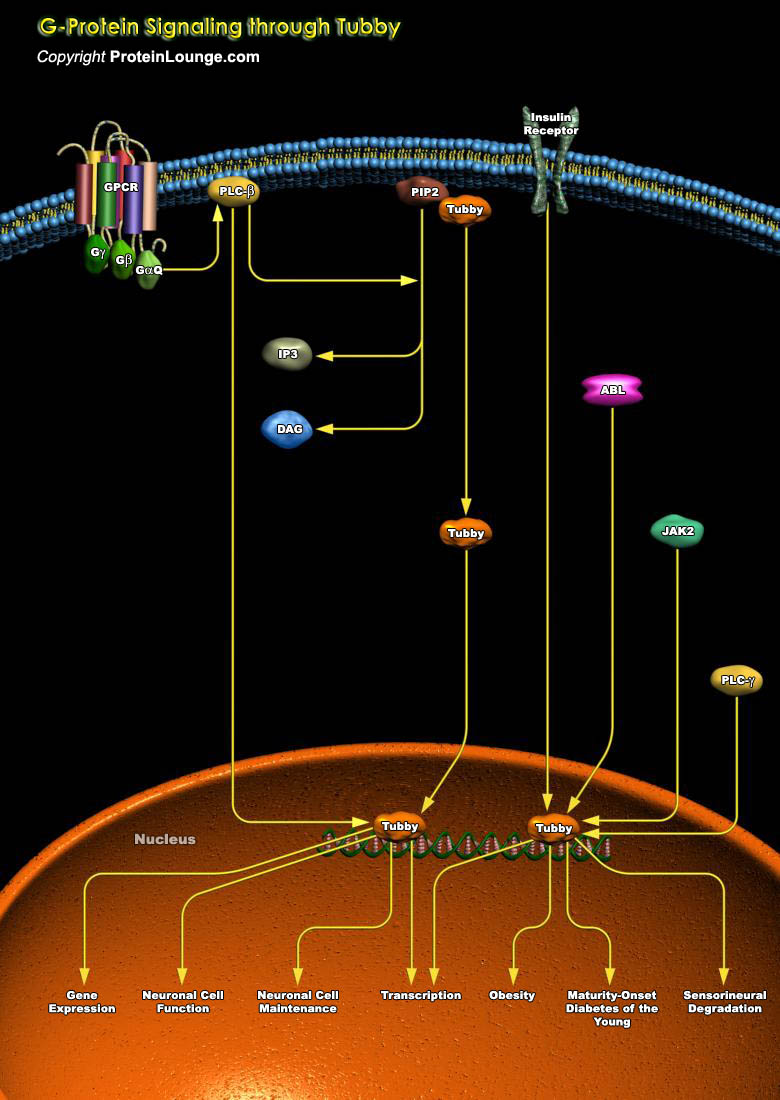
The Tubby protein is the founding member of a multigene protein family that plays an important role in maintenance and function of neuronal cells during development and post-differentiation. Currently, four Tubby gene family members (TUB, TULP1, TULP2 and TULP3) have been identified, which are conserved among different species of mammals (Ref.1). Besides, Tubby-like proteins are also found in other multicellular organisms including plants. These proteins feature a characteristic "Tubby domain" of approximately 260 amino acids at the C-terminus that forms a unique helix-filled barrel structure; this C-terminal domain binds avidly to double-stranded DNA. Most Tubby proteins include NH2-terminal regions that, in general, are not closely related to one another.[..]
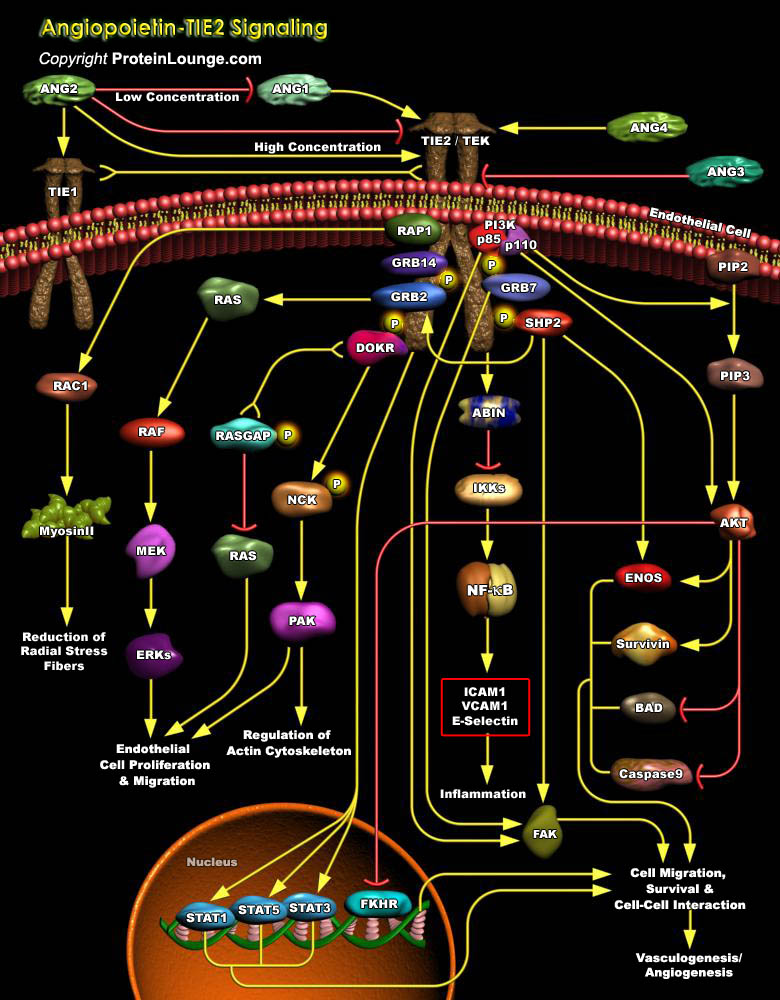
Development of a functional cardiovascular system is dependent on the regulated proliferation, migration, and differentiation of endothelial cells in two discrete processes known as vasculogenesis and angiogenesis. Angiogenesis is the formation of new capillaries from pre-existing vessels, whereas vasculogenesis is de-novo capillary formation from EPCs (Endothelial Precursor Cells). New capillaries arise from preexisting larger vessels to give rise to a more complex vascular network with a hierarchy of both large and small vessels (Ref.1). These sequential vascular developments are tightly regulated by a range of pro- and antiangiogenic factors, including VEGF (Vascular Endothelial Growth Factor ), bFGF(basic Fibroblast Growth Factor ), Thrombospondin, Angiopoietins,[..]
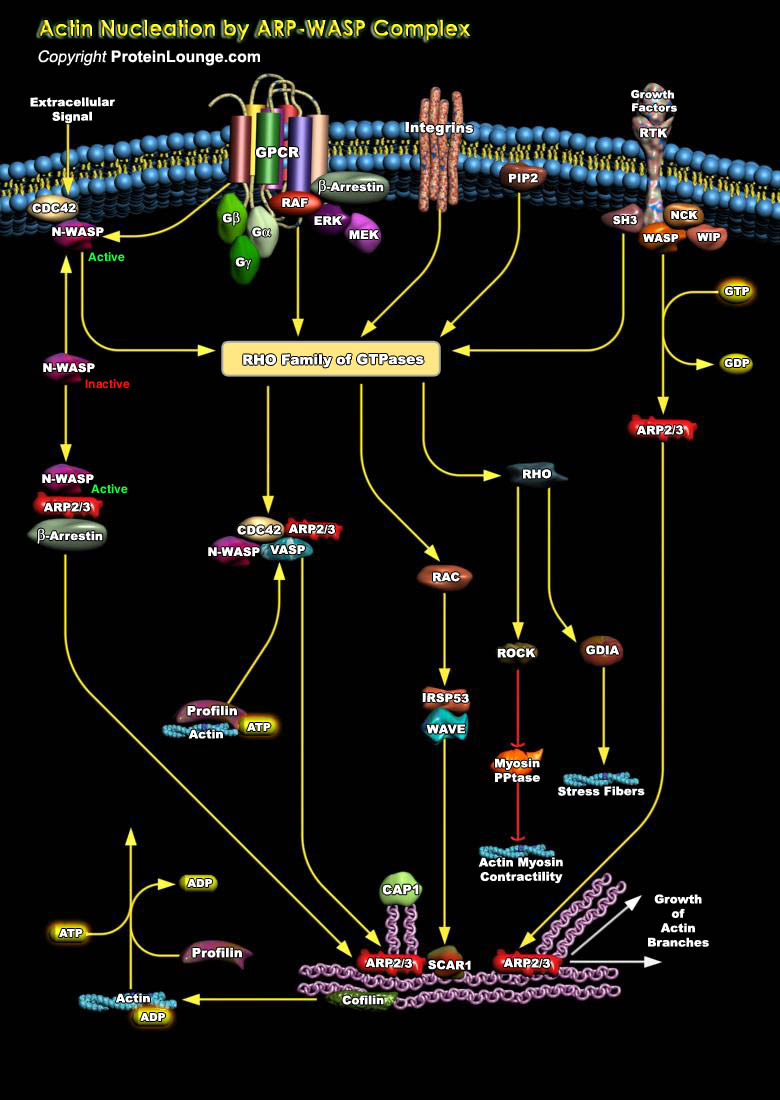
Actin Nucleation By ARP-WASP Complex For many cell types, the ability to move across a solid surface is fundamental to their biological function. Certain aspects of cell locomotion, such as the protrusion of the plasma membrane in lamellipodia and filopodia, are driven by the polymerization of actin cytoskeleton. The actin cytoskeleton is a dynamic filament network that is essential for cell movement during embryo development, polarization, morphogenesis, cell division, and immune system function and in the metastasis of cancer cells. To engage in these complex behaviors, cells must direct actin assembly with a high degree of spatial and temporal resolution in response to extracellular signals (Ref.1). To coordinate these behaviors, tight spatial and temporal control[..]
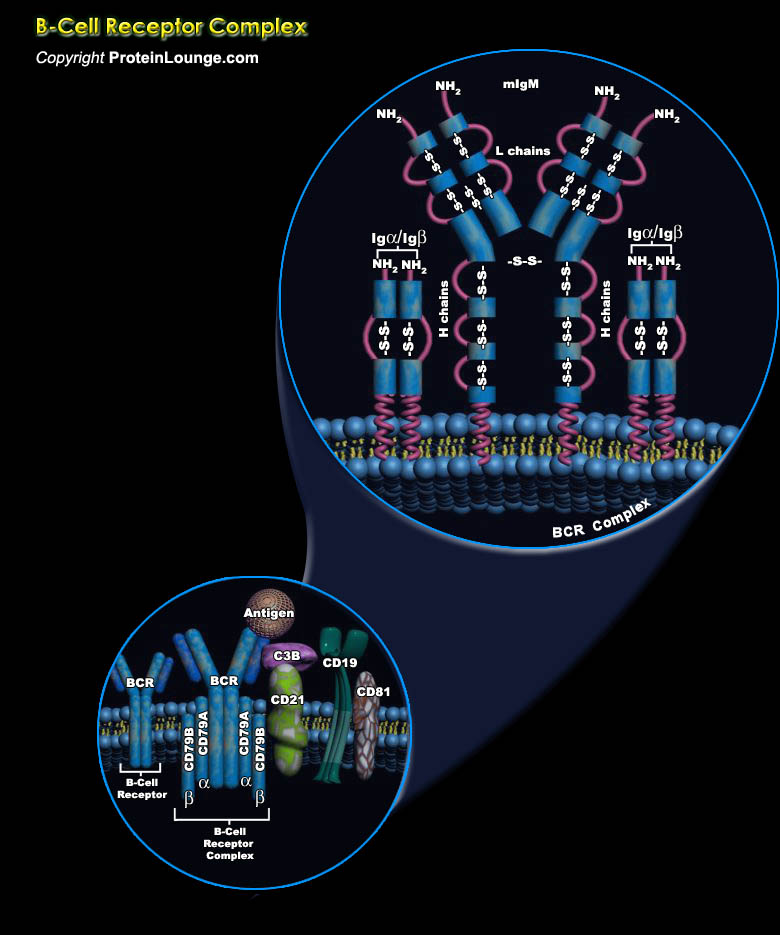
Lymphocytes are one of the five kinds of white blood cells or leukocytes, circulating in the blood. Although mature lymphocytes all look pretty much alike, they are extraordinarily diverse in their functions. The most abundant lymphocytes are: B-Lymphocytes (often simply called B-Cells) and T-Lymphocytes (likewise called T-Cells) [Ref.1]. B-Cells are not only produced in the bone marrow but also mature there. Each B-Cell is specific for a particular antigen. The specificity of binding resides in the BCR (B-Cell receptor) for antigen [Ref.2]. Mature B cells express two BCR isotypes, IgM and IgD. The BCR is composed of mIg (membrane immunoglobulin); a structure of four (in the case of IgD) or five (IgM) immunoglobulin domains in the heavy chain linked by a hinge, and a[..]

